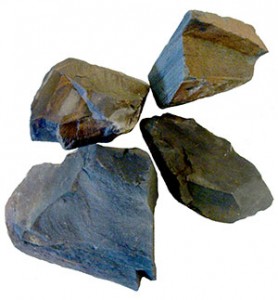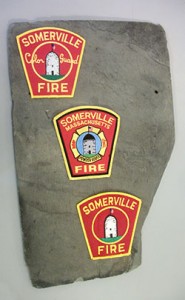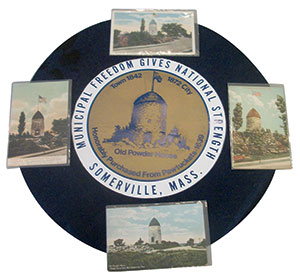* Eagle Feathers #60 – The Sentinel
Eagle Feathers #60 – The Sentinel
By Bob (Monty) Doherty
How old is Somerville? It depends on how you measure it. If you use the European settlement or when it was part of Charlestown as your barometer, it would date from 1628. If you use the time that it separated from Charlestown, it would be 1842. If you use when it became a city, it would be 1872.
Actually, these years are but seconds and micro seconds in her real age. The topography, or top layers of most of Somerville’s soil, was deposited here by glaciers roughly 14 to 15 thousand years ago. As old as this topsoil description sounds, its age is incredibly minute compared to Somerville slate or Somerville bluestone, as it is known. Slate is old – 450 to 600 million years old. It predates humans, dinosaurs, and insects. The deep bedrock of Somerville is slate.

Its most prominent location surfaces at Quarry Hill on the edge of Powder House Square. Somerville bluestone was quarried from this location and brought to Union Square where it was cut for distribution.
Look around a bit, and you will find this slate throughout the city. Hundreds of homes sit on slate foundations and are covered by slate roofs. Throughout the years, Somerville bluestone has been used for walls, sidewalks and flagstone garden pavers in Somerville, Boston and elsewhere. Churches, schools, and firehouses across the city were built or partially built with Somerville slate.

In the mid 1980’s, the 120-foot deep MBTA subway tunnel – the deepest in the metropolitan transit system – cut through Somerville bedrock on its way from Porter Square to Davis Square. The slate’s uses bridged from school chalkboards to pool tables. The beautiful Goddard Chapel on Tufts’ Walnut Hill was built of Somerville bluestone slate. It was used for colonial tombstones, including the gravestone of Jean Mallet, the architect of the city’s symbol, the Powder House. Constructed of bluestone, it was built in 1703. Mallet is buried in Charlestown, under the shadow of Harvard’s memorial to their founder, John Harvard.
This week the Powder House, Somerville’s proud medallion, which denotes the revolutionary occurrence of September 1, 1774, celebrates it 240th anniversary. The British attack predated Lexington and Concord by eight months and planted the seed of the American Revolution. Somerville’s oldest relic still sits on solid ground.
















Reader Comments